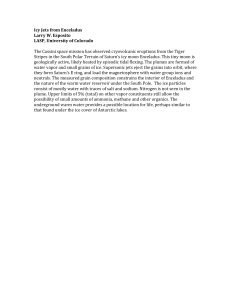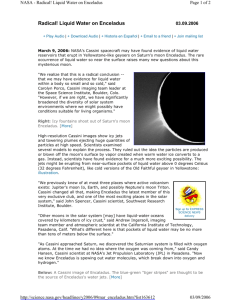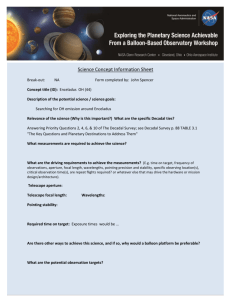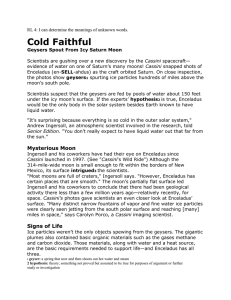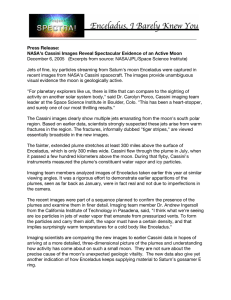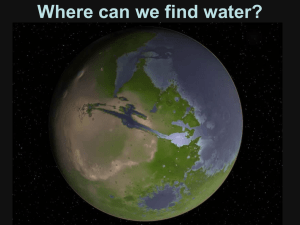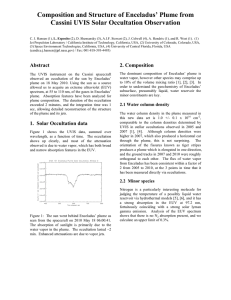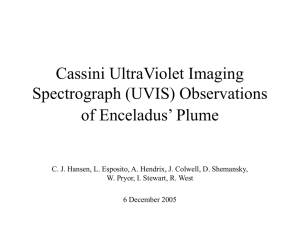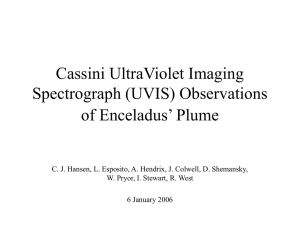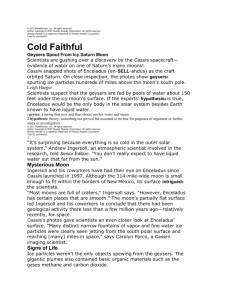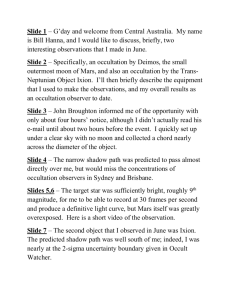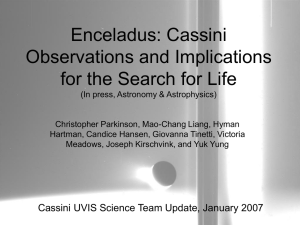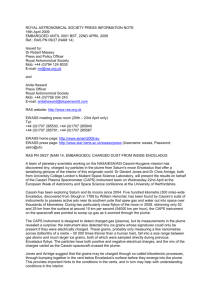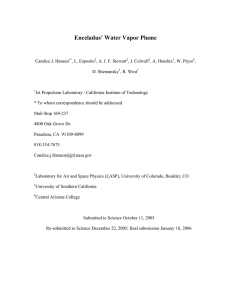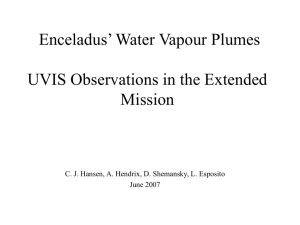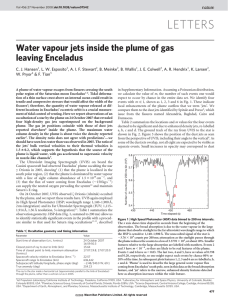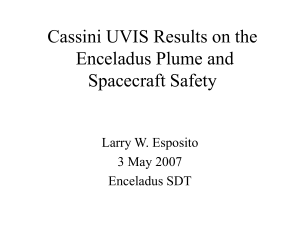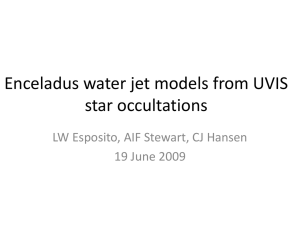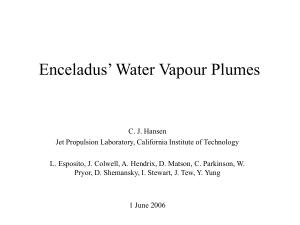Document 12587306
advertisement
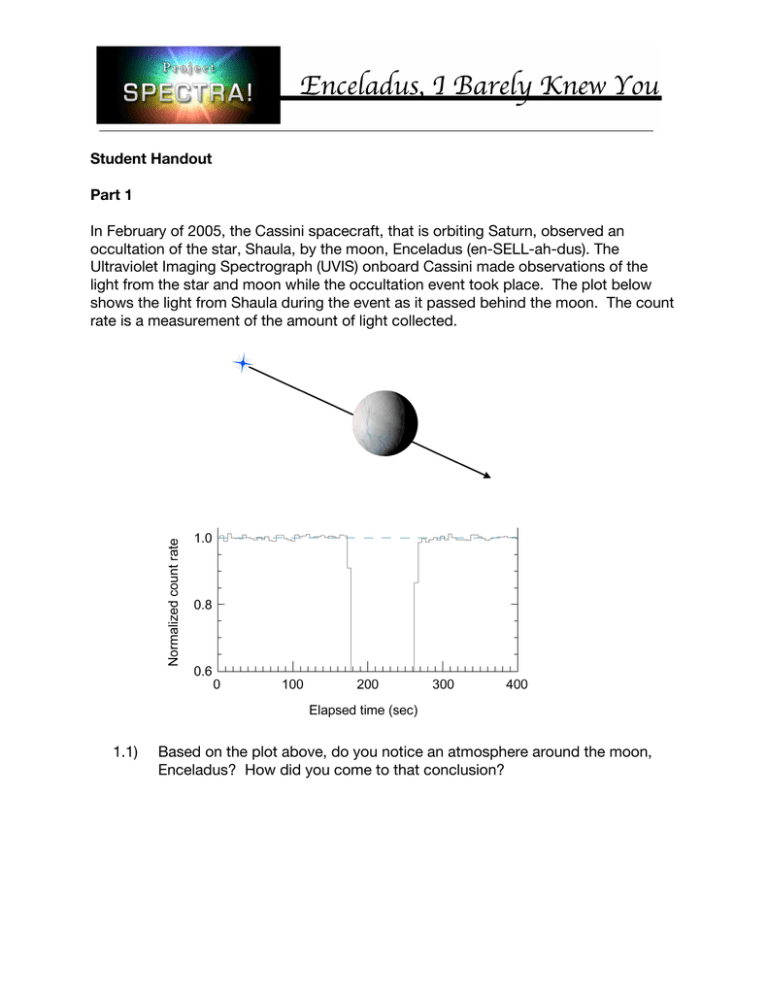
Student Handout Part 1 In February of 2005, the Cassini spacecraft, that is orbiting Saturn, observed an occultation of the star, Shaula, by the moon, Enceladus (en-SELL-ah-dus). The Ultraviolet Imaging Spectrograph (UVIS) onboard Cassini made observations of the light from the star and moon while the occultation event took place. The plot below shows the light from Shaula during the event as it passed behind the moon. The count rate is a measurement of the amount of light collected. 1.1) Based on the plot above, do you notice an atmosphere around the moon, Enceladus? How did you come to that conclusion? In July of 2005, another occultation occurred behind Enceladus with the star, Bellatrix. The UVIS took data on this event as well. The plot below shows the light from Bellatrix during the event as it passed behind the moon. 1.2) Write a hypothesis about what is happening at Enceladus. 1.3) Draw a picture that shows your hypothesis, below: Part 2 Your teacher will display the images, “A Crescent Enceladus,” “Enceladus Illuminated,” “February 2005 Occultation,” and “July 2005 Occultation.” After discussing the images as a class, answer the following questions. 2.1) Was your hypothesis about what is happening on Enceladus correct? Why/ why not? Explain. 2.2) Read the article, “NASA's Cassini Images Reveal Spectacular Evidence of an Active Moon” and answer the questions below: a) After initial observations were made of the jets, how did scientists determine what the jets were made from? b) What evidence was examined to confirm that the jets exist? c) What hypothesis is made about the E-ring? 2.3) What data do you think could be taken by Cassini to support the hypothesis about the E-ring? Part 3 In November of 2005, Cassini flew by Enceladus again. This time, the Visual and Infrared Mapping Spectrometer (VIMS) took data on the surface of the Enceladus, the jets of material coming from the south pole of the moon, and also of the E-ring. The plot below shows the spectra recorded during this flyby: 3.1) Based on the plot above, could the majority of the material in the E-ring be from scattered ice from micrometeorites impacting the surface of Enceladus? Explain. 3.2) Explain in your own words how the E-ring is maintained. 3.3) If you could send a mission to Enceladus, what would you have it study, and why? Share your answer with the class.
